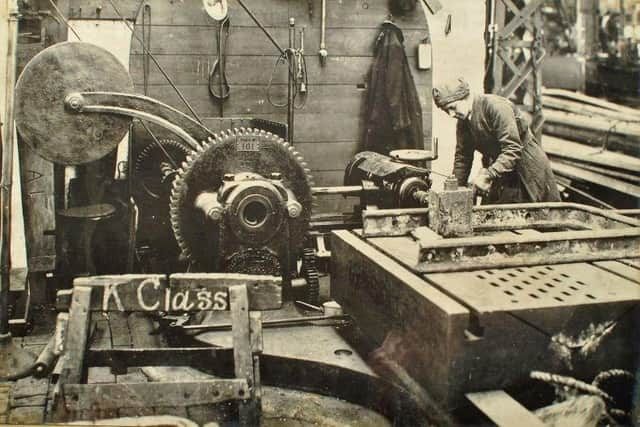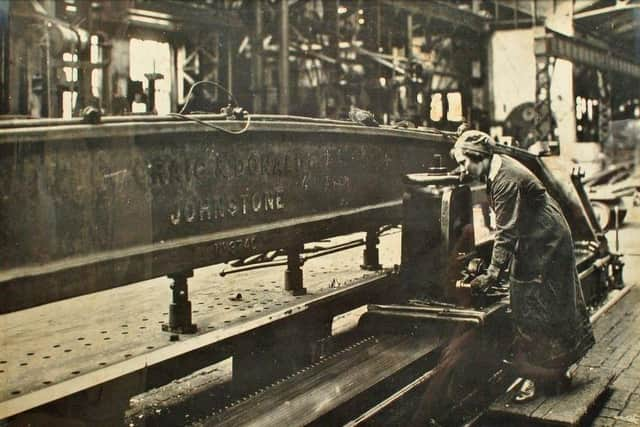The forgotten story of Portsmouth Historic Dockyard's First World War Triangle Girls
and live on Freeview channel 276
After securing £10,000 of Heritage Lottery funding, Dr Melanie Bassett has been working with volunteers at the Portsmouth Royal Dockyard Historical Trust to tell the untold story of the city’s Triangle Girls – the women who took up the jobs previously done by men before the outbreak of war.
Dr Bassett said: ‘The women earned their nickname from the triangle-shaped badges they proudly wore bearing the words ‘On War Service’. By October 1918 there were 2,200 women working in the city’s dockyard, supplying warships and repairing those which had been damaged.
Advertisement
Hide AdAdvertisement
Hide Ad‘We hear a lot about the role of the Land Girls and the Wrens but little has been said about the dockyard workers, without whom it would have been more far more difficult to win the war. It’s important their story is heard.’


With men fighting on the Western Front the dockyard women took on the jobs of driving boats, welding, soldering and installing electrical equipment. However, despite the need to pull together they were not fully accepted into what had been traditionally a male domain.
Dr Bassett said: ‘Certain jobs, including those at the shipyards, had been starred as essential and so the men were retained rather than going off to fight. However, with the advent of conscription in 1916 many of the semi-skilled roles were taken on by the women.
‘The men who were left behind were reluctant to accept women in the dockyard. At first they still had to wear dresses at work and there are a number of accounts of men shouting lewd comments at the women when they were working up ladders.’


Advertisement
Hide AdAdvertisement
Hide AdThe research project is to be used to create an exhibition at Portsmouth History Centre as well as a series of lectures at the university. However, Dr Bassett and colleague, professor Brad Beaven, hope the exhibition will find a permanent home at the Historic Dockyard.
‘While discussions are ongoing I’m hopeful the exhibition will be incorporated into the current one at the dockyard. At present there’s only a very small section about the role women played – predominantly in the sewing of flags and hammocks.
‘It’s important their vital role during the First World War is given the exposure it deserves,’ said Dr Bassett.
With research still ongoing the first exhibition in due to go on display in the summer.
